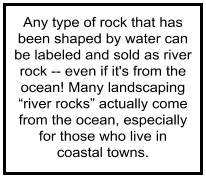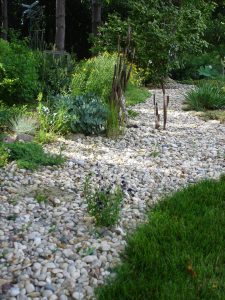
By Brian Birch
Courtesy of Facility Executive
The commercial snow and ice management industry is expanding in its application of innovative equipment and techniques. Industry suppliers are successfully scaling equipment focused on liquid brine making, liquid applications, and specialty equipment to meet the needs (and budgets) of snow professionals. Methods and tools that used to be reserved for large municipal applications are now becoming available. The use of liquids for sidewalks and certain commercial settings is on the rise, as is the ability for snow professionals to offer a wider array of services and application techniques to meet specific contract requirements.
Overall, this is great news for facility management professionals. It means that more efficiency and proficiency are being driven into professional snow management services. These also, however, tend to complicate an already complex and risky marketplace. Finding the contractors that are advancing themselves in this area will be critical in aligning your facility portfolio with more proficient best practices for snow management.
Aside from mechanically heating or removing snow, some form of deicing agent is required. Surveys conducted by the Snow and Ice Management Association (SIMA) and Harvard-published thesis research by SIMA snow industry liaison, Phill Sexton, CSP, consistently report nearly 80% of snow and ice management contracts charge for the amount or frequency of salt applied. Compounding this challenge is the fear of liability and slip and fall claims. In short, the fear of the latter gives rise to more pressure to overuse salt as facility management and contractors seek to mitigate this risk.
These issues are interrelated in this marketplace, and it does a disservice to all involved to discuss trends in salt management without addressing the economic and risk variables that primarily drive salt use.
BALANCING THE RISK
In the current state, the concept of risk transfer is king. Most snow and ice management contracts attempt to push as much slip and fall related risk to the other party. The trend in the last decade has to transfer a great deal of risk to the provider. As a result, insurance for snow and ice management companies is more expensive and harder to find; however, in certain states, grassroots movements for change have been successful. Several states, including Illinois, New Hampshire, and Colorado, have legislation that can protect snow contractors from some liability.
At the end of the day, one party will be held responsible, and the natural reaction based on the fear of litigation is to overapply deicing materials. This strategy does not address the long-term sustainability of risk, to create a sustainable environmental plan for snow, or to provide financial consistency for all parties. Luckily, two major initiatives can shift to impact these trends.
SUSTAINABLE SALT BEST PRACTICES
In the past three years, the snow management industry has developed best practices guidelines, including SIMA’s Best Practices Guideline for Sustainable Salt Use. The guide provides an overview into three major areas that contribute to excessive salt output:

Proper storage policies are a key component in the industry’s sustainable salt best practices. (Photo: Snow and Ice Management Association (SIMA))
Purchasing. Salt procurement is an ongoing challenge for the commercial snow industry, which is more fragmented as a buyer than larger state/municipalities, and thus has less purchasing power. The SIMA guide includes recommendations for inventory and purchasing best practices. Most importantly for those who hire snow services, this section lays out recommendations for minimum salt inventories for contractors. Those who adhere to these best practices will be better able to service their customers, a critical consideration that is extremely important during seasons when salt supply limitations arise.
Storage and Transport. If not stored properly, large amounts of salt can be wasted and have environmental and financial consequences (in terms of fines). This section contains broad recommendations on storage and covering, inventory monitoring, and quality control. The guide recommends a policy for site-specific salt storage and that all storage is aligned with local, state/provincial, and federal requirements. This is critical if contractors are staging salt on your sites, which is logistically advantageous and allows for more efficient storm response.
Operations. This section of the guide focuses on general policies and processes tied to ice management, including application rates, calibration, and anti-icing. By far the most robust section of the guide, it provides scalable options for contractors, including Level 1 recommendations and more advanced Level 2 recommendations.
In addition to these best practices, more commercial snow service providers are investing in plow and liquids application tools, delving more into training and liquids use, and making salt brines. This is a powerful set of tools that can make a big difference in the amount of deicing product used on a site. However, until the pervasive fear of slip and fall liabilities can be mitigated more effectively for all parties, the cultural impetus to salt more will often outweigh science and skill. In other words, even the best practitioners and customers in the snow industry often can’t overcome alone the desire to “nuke” a property to avoid a potential lawsuit.
SHARED LIABILITY TO MANAGE SHARED RISK
The most effective way to impact salt use lies not in more or better equipment, but in a more collaborative relationship between service providers and the facility managers that they serve. To help manage this challenge, SIMA worked with facility managers and snow contractors over a two-year process to produce a comprehensive Purchasing Snow & Ice Management: Quality RFP Creation and Best Practices guide, which covers critical areas of procuring commercial snow and ice services, including a section on the contractual relationship between the two principal parties. SIMA’s Best Practices for Snow Industry: Risk Management and Shared Accountability for commercial properties recommends:
- Clear communication plan between contracted parties (customer, aggregator, service provider, subcontractors).
- Clearly defined who has the authority to make decisions on deicing applications, sidewalks deicing and snow clearing, any additional services, and the ceasing of any services during an event.
- Any changes, additions, or cessations to contracted services must be executed in writing by those identified contractually as having the authority to do so, and should be executed with liability waivers or associated liability adjustments appropriate to the request.
- Written notifications from facility to contractor related to snow or ice conditions that need service or are hazardous.
- Use of caution signage in key areas, communicating potentially slippery conditions. Identify clearly in agreements which party is responsible for staging signage.
- Damage assessment required prior to season.
- Immediate notification of snow or ice incidents or accidents to all parties in the communication chain.
- Proof of insurance, and specifically required policy information such as snow riders requirements, umbrella policies, etc.
- Contractor should only be liable for negligence by omission or error in service. Requiring the service provider to accept full indemnification creates an imbalance in risk and may be illegal in some states.
Furthermore, service contracts can be structured to incentivize performance rather than amount or frequency of salt applied. This type of structure requires trust on both sides of the contract and a willingness to share the risk and rewards of above or below average winter seasons.
A reasonable effort and partnership will be the only long-term solution to enable innovation, less environmental impact, and more trust in snow and ice. The true battle is fought in the courtroom and in insurance offices, where the shifting of liability makes it harder to defend and less likely to result in a reduction of slip and fall claims.
Birch is chief operating officer of the Snow & Ice Management Association (SIMA). Having joined the association in 2004 as membership administrator, Birch’s tenure at SIMA includes serving as lead in core Best Practices initiatives, as well as overseeing the launch of the association’s Advanced Snow Management credentialing program. All of SIMA’s best practices guides, including those noted in this article, are free to download.
The post Snow And Ice Management For Facility Grounds appeared first on Turf.
from RSSMix.com Mix ID 8230377 https://ift.tt/2PL1n4V
via
IFTTT








